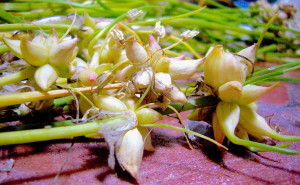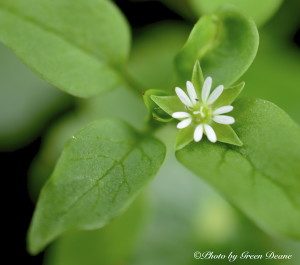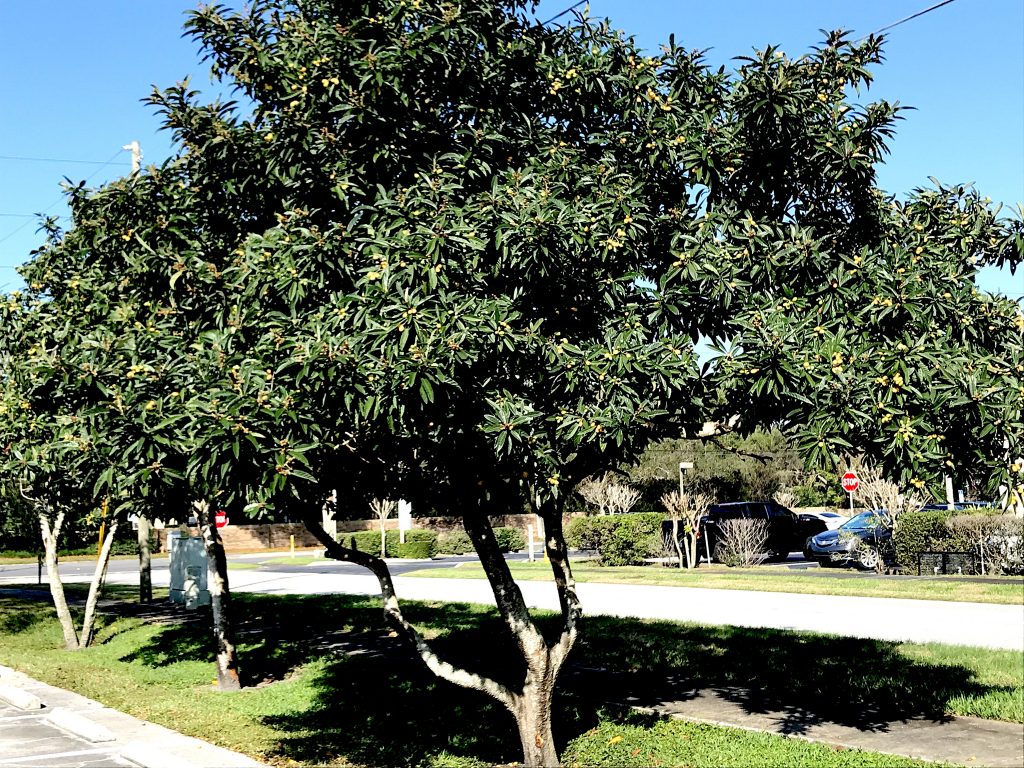
Loquats are starting to ripen. Photo by Green Deane
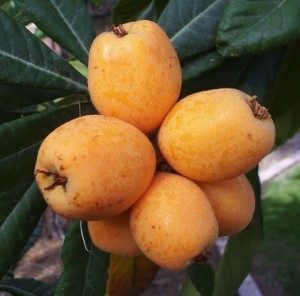
Loquats actually have a small amount of arsenic in them. Photo by Green Deane
While driving around have you seen a tree with large, dark green leaves and yellow fruit? It’s probably a Loquat which are heavy with fruit now. This past Week I picked 10 pounds of Loquats in less than an hour. That’s calorie positive. Rather than eating them outright I deseeded then dehydrated them. Like plums changed to prunes the fruit changes character but it is still tasty. I have also learned over the years at adding sulfur before drying does not stop the fruit from browning. You can dehydrate tart and sweet Loquats but you should avoid all green Loquats. Unripe fruit can be toxic especially for children. As long as the fruit is yellow to gold they are good. If you can detect any green hues the fruit is not ripe.
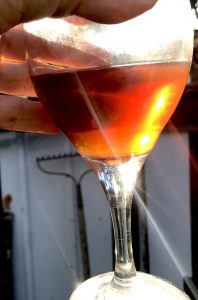
Year-old loquat wine. Photo by Green Deane
Loquats are not native but they have naturalized themselves and can be found throughout the region. How you eat the ripe fruit is something of a debate. I just break off the stem that holds them to the tree then eat, spitting out the seeds. You should try to not eat any seeds. An occasional seed is of no great harm but they generally are not considered edible though I have heard of folks roasting them then eating them. I do not recommend that. Some people also peel the fruit but I don’t. To dry them all I do is cut around the equator of a each fruit, take out the seeds (used later to make into Loquat Grappa.) Then dehydrate the fruit at about 130 F. I also made loquat wine last year during COVID april. It tastes similar to a drysemi-sweet sherry. You can read more about Loquats here.
Now is the time to start looking for wild garlic/onions. There are seasonal weather influences. Near Gainesville by this time of year I would expect to find wild garlic with cloves. But because of low rainfall both wild garlic and chickweed were behind season. Because of seasonal variations you can find wild garlic locally from now to April or so. What is unusual about Allium canadensis is that it has an onion-like bulb, a strong garlic-scented stem, and grows garlic cloves on top of the plant. To read more about wild garlic go here.

Classes are held rain or shine or cold. (Hurricanes are an exception.) Photo by Kelly Fagan.
Foraging Classes: Heading to a favorited site in southwest Florida this weekend, Port Charlotte at Bayshore Park along the Peace River.
Sunday February 28th, Bayshore Live Oak Park, Bayshore Drive. Port Charlotte. 9 a.m. to noon, meet in the parking lot at Ganyard and Bayshore.
Saturday, March 6th, Red Bug Slough Preserve, 5200 Beneva Road, Sarasota, FL, 34233. 9 a.m. to noon.
Sunday, March 7th, Mead Gardens, 1500 S. Denning Dr., Winter Park, FL 32789. 9 a.m. to noon. The entrance is on the west side off Denning not the east side off Pennsylvania. Some GPS maps are wrong. Meet near the bathrooms.
Sunday, March 14th, Wickham Park, 2500 Parkway Drive, Melbourne, FL 32935-2335. 9 a.m. to noon. Meet at the “dog park” inside the park. It wasn’t chickweed as far as the eye could see, but almost. The location: Little Orange Creek Nature Park, Hawthorne, Florida. The event: The Florida Earthskills 2015 gathering. I taught two wild edible plant classes there then a separate class in Gainesville.
For more information, to pre-pay or sign up, go here.
As for seasonal edibles they are abundant: Chickweed, Pellitory, Cleavers, Wild Radishes, Wild Garlic/Onions, Hensbit, Nettles, Maypops, Oxalis, Sweet Clover, even some frost-brave Poke Weed. And can find Blackberries in bloom as well as the Eastern Redbud. Just because there might be some frost on the palm don’t think there isn’t any food foraging this time of year. It is prime season for many species that are spring and summer plants up north. They find our winters just right and the summers too hot. In Central Florida one does not find an acre of chickweed, but 150 some miles to the north it was quite abundant. Chickweed is highly seasonal and is easy to identify. The main elements we are looking for are a line of hair on the stem that changes sides at every leaf node, a stretchy inner core, five white petals that look like 10 because the are deeply incised, and it tastes like corn silk. If you want to read more about chickweed you can go here.
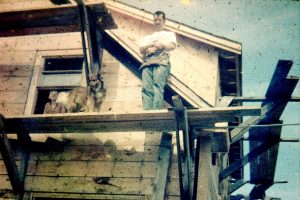
My step-father, me and our dog “sister” 1958. Photo by Mae L. Jordan.
My step-father built the house we lived in and the horse and hay barns next door. As the building season is short in Maine this took several years. Thus the front yard was totally ignored until my mother demanded one spring that something intentional grow there. She had grass in mind. So my step-father took several wheelbarrows of chaff from the bottom of the hay barn and spread it on what would be the lawn. Within a few weeks it grew a huge crop of Wild Mustard. The second flush was Lamb’s Quarters, also called Fat Hen.
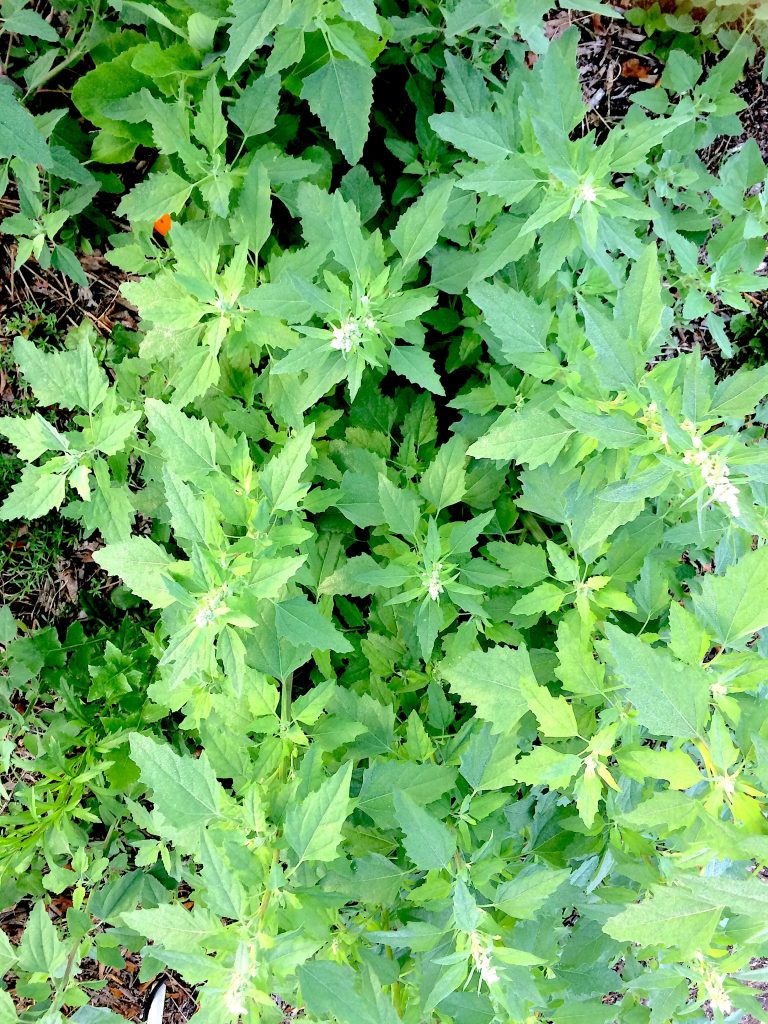
Lamb’s Quarters is mild like spinach. Photo by Green Deane
One day not long after that a neighbor was visiting, a chicken farmer named William Gowen. As he left to walk home he ask my father if he could have a few Lamb’s Quarters. My step-father said he could. Mr. Gowen pulled up about eight five-foot high plants, hefted them over a shoulder, and happily carried them home to eat. Until then I had no idea they were edible. As Mr. Gowen was also a good gardener I am sure any Lamb’s Quarter that dared to grow in his garden also became dinner. I was reminded of him while on the way to my foraging class Sunday. Along the way I saw a lot of Lambs Quarters in several citrus groves. The name Lamb’s Quarters has nothing to do with lambs. It was a leafy green eaten some 1300 years ago on Lammas Quarter day (August 1st) in England (some say Scotland.) Lammas came from Loaf Mass, as the day was of religious significance. A loaf from newly harvested grain was made and taken to church and blessed. It is called Fat Hen because it supposedly was good to fatten hens. “Pigweed” is a common name for many different plants.
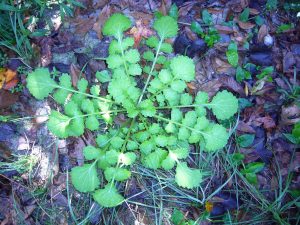
Toxic young Butterweed can make one think of mustards. Photo By Green Deane
It’s time for another warning about Butterweed. It’s a toxic plant this time of year that’s been out for a while but seems to be flushing now. I learned it as Senecio glabellus but now some are calling it Packera glabella. This plant can put you in the hospital with serious liver damage. It is not on par with deadly mushroom but it’s down the same sickening road. There was a case in Southwest Florida just a few years ago. From a forager’s point of view it can — from a distance — resemble wild mustard or wild radish. On closer inspection it clearly is not a mustard. The blossoms are not a yellow cross and the leaves are not sandpappery. Growing in wet spots, Butterweed delivers its load of alkaloid pyrrolizidines without warning. Most alkaloids are bitter. Butterweed leaves are very mild in flavor and have a pleasing texture. Mustards do not. It’s in the Aster family which is 1) huge with some 22,000 members, and 2) plants in that family usually are not toxic. You can read more about pyrrolizidines here.
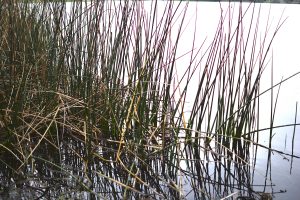
Bulrushes have edible roots. Photo by Green Deane
An often overlooked wild edible is Bulrush, which we saw this past weekend. This tall sedge gets second billing to the another common watery inhabitant, cattails. While there are several species of Bulrush locally the two one sees most often are Scirpus californicus and S. validus. Used like cattails, the easiest way to tell the species of Bulbrushes apart is to look at the seed tufts location and color of the seeds which introduces an important point: The experts tell us there are no toxic sedge seeds thus if you have a sedge you have a source of edible seeds. On these species the seeds are small but are easy to harvest (if you have a boat or a canoe.) To read more about Bulrushes and to identify sedges in general go here.

Green Deane videos are now available on a USB.
150-video USB or 135 video DVD set would be a good spring present and either is now $99. My nine-DVD set of 135 videos has been selling for seven years and are still available. I have one set left. They are the same videos I have on You Tube. Some people like to have a separate copy. A second option is a 16-gig USB that has those 135 videos plus 15 more. While the videos can be run from the DVDs the videos on the USB have to be copied to your computer to play. They are MP4 files. The150-video USB is $99 and the 135-video DVD set is now $99. The DVDs will be sold until they run out then will be exclusively replaced by the USB. This is a change I’ve been trying to make for several years. So if you have been wanting the 135-video DVD set order it now as the price is reduced and the supply limited. Or you can order the USB. My headache is getting my WordPress Order page changed to reflect these changes. We’ve been working on it for several months. However, if you want to order now either the USB or the DVD set make a $99 “donation” using the link at the bottom of this page or here. That order form provides me with your address, the amount — $99 — tells me it is not a donation and in the note say if you want the DVD set or the USB.

Green Deane Forum
Want to identify a plant? Perhaps you’re looking for a foraging reference? You might have a UFO, an Unidentified Flowering Object, you want identified. On the Green Deane Forum we — including Green Deane and others from around the world — chat about foraging all year. And it’s not just about warm-weather plants or just North American flora. Many nations share common weeds so there’s a lot to talk. There’s also more than weeds. The reference section has information for foraging around the world. There are also articles on food preservation, and forgotten skills from making bows to fermenting food.
This is weekly newsletter #446, If you want to subscribe to this free newsletter you can find the sign-up form in the menu at the top of the page.
To donate to the Green Deane Newsletter click here.
Chickweed mixed in with Dollarweed, or, potassium, vitamin E and B12 for free.
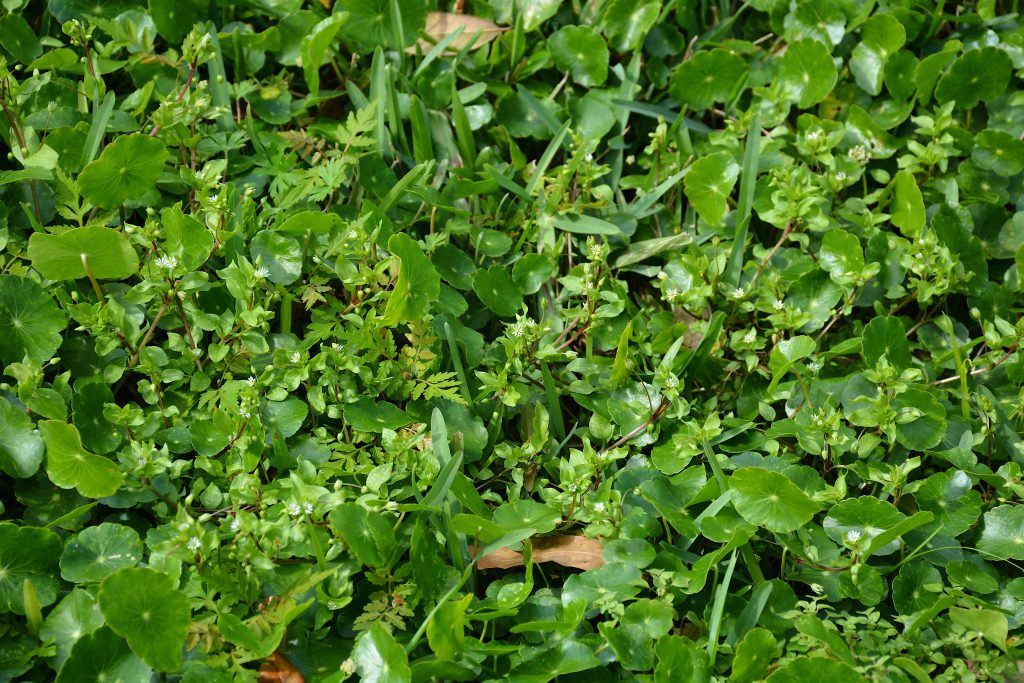
Dollarweed and Chickweed. Photo by Green Deane

